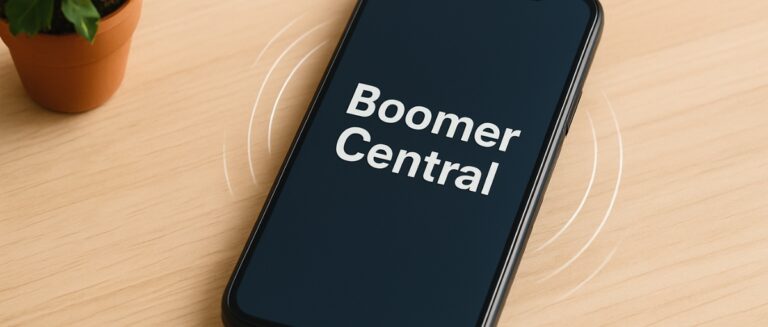Imagine fully engaging in conversations with your loved ones, enjoying your favorite music, and navigating daily life with confidence. For the nearly 29 million adults in the United States who could benefit from hearing aids, these small but powerful devices are a lifeline to a better quality of life.
As a senior, you may be among the one in three people between 65 and 74 who experience hearing loss. If you’re considering hearing aids or already using them, understanding their lifespan is crucial to making informed decisions about your hearing health.
Hearing aids are a significant investment, not only in terms of cost but also in terms of their impact on daily life. On average, hearing aids can last anywhere from three to seven years, depending on various factors such as the type and quality of the device, how often it is used, and how well it is maintained.
So, whether you’re new to hearing aids or a seasoned user, join us on this journey to better understand the lifespan of these essential devices and how you can maximize their potential to improve your hearing and your life.
How Long Do Hearing Aids Last?
When investing in hearing aids, one of the first questions that comes to mind is, “How long do hearing aids last?” While there is no one-size-fits-all answer, understanding the average lifespan of hearing aids can help you plan for the future and make informed decisions your hearing health.
The average lifespan of hearing aids can last anywhere from three to seven years. However, this range is influenced by several factors, including:
- The type of hearing aid (in-the-ear vs. behind-the-ear)
- The quality of the device (basic vs. high-end digital)
- How often the hearing aid is worn
- The user’s lifestyle and habits
- The level of maintenance and care provided
In-the-ear (ITE) hearing aids, custom-fit to the user’s ear canal, generally have a shorter lifespan than behind-the-ear (BTE) styles. This is due to their exposure to more moisture and earwax, which can affect the internal components. On average, ITE hearing aids last between four and five years.
Behind-the-ear (BTE) hearing aids, on the other hand, tend to have a longer lifespan, typically lasting between five and six years. The electronic components of BTE hearing aids are housed in a separate compartment that sits behind the ear, providing better protection from moisture and debris.
The quality of the hearing aid also plays a significant role in its longevity. Basic, low-end devices may have a shorter lifespan compared to high-end, digital hearing aids equipped with advanced features and more durable materials. While the upfront cost of high-end hearing aids may be higher, they often provide better performance and longer-lasting results.
It’s important to remember that these are general estimates, and the actual lifespan of your hearing aids may vary based on your individual circumstances.
Factors Affecting Hearing Aid Lifespan
Several factors can impact the lifespan of hearing aids, including the materials used in their construction, the frequency of maintenance, and the individual’s unique hearing needs. Understanding these factors can help you make informed decisions when selecting and caring for your hearing aids.
Materials and Construction
The materials used in hearing aid construction are crucial to the durability and longevity of the hearing aid. Modern hearing aids are typically made of a combination of plastic, metal, and silicon components, each contributing to the device’s overall strength and resistance to wear and tear.
Many high-end hearing aids feature nano-coatings and moisture protection to enhance their durability and protect against damage caused by sweat, earwax, and other environmental factors. These advanced materials can significantly extend the lifespan of hearing aids, ensuring they continue to perform optimally for years to come.
Frequency of Cleaning and Maintenance
Regular cleaning and maintenance are essential for preserving a hearing aid lifespan over the years. If left unchecked, earwax, moisture, and debris can accumulate on the devices, leading to performance issues and potential damage.
To keep hearing aids in top condition, daily cleaning by the user is recommended. This involves gently wiping the devices with a soft, dry cloth and using specialized tools, such as wax picks and brushes, to remove debris from the openings and crevices.
In addition to daily cleaning, professional maintenance every three to four months is crucial. During these visits, hearing care professionals thoroughly clean and inspect the hearing aids, making any necessary adjustments or repairs to ensure optimal performance and longevity.
Where and How Often Hearing Aids Are Worn
The environment in which hearing aids are worn and the frequency of use can also impact their lifespan. Exposure to moisture, dust, and extreme temperatures can damage the delicate electronic components, leading to potential malfunctions or reduced longevity.
Individuals who wear their hearing aids in humid environments or engage in activities that cause excessive perspiration may need extra precautions, such as using protective covers or dehumidifiers, to minimize the risk of moisture damage.
The frequency of use also plays a role in hearing aid longevity. Devices that are worn occasionally may last longer than those used daily, as they experience less wear and tear over time. However, regular use is essential for maintaining optimal brain health and preventing auditory deprivation.
Battery Type and Lifespan
Hearing aid batteries, whether disposable or rechargeable, can significantly impact the overall lifespan of the devices. Disposable batteries typically last between five and fourteen days, depending on the battery’s size, the hearing aid’s power requirements, and the user’s listening habits.
Rechargeable hearing aids, which have gained popularity in recent years, use lithium-ion batteries that can last up to 24 hours on a single charge. These batteries have a lifespan of approximately four to five years, after which they may need to be replaced.
The type of battery used and how frequently it needs to be changed or recharged can affect the long-term performance and longevity of hearing aids. It’s crucial to follow the manufacturer’s battery management guidelines and work closely with a hearing care professional to determine the best battery solution for your specific needs.
Individual Physiological Factors
Each individual’s unique physiology can impact the lifespan of their hearing aids. Factors such as earwax production, skin oil, and sweat can vary from person to person, leading to different levels of buildup and potential damage to the devices.
Some individuals may produce more earwax or have oilier skin, which can clog the hearing aid’s openings and affect its performance. In these cases, more frequent cleaning and maintenance may be necessary to ensure optimal functionality and longevity.
It’s essential to discuss these individual factors with a hearing care professional when selecting and maintaining hearing aids. They can provide personalized advice on cleaning techniques and maintenance schedules based on your specific needs and physiological characteristics.
Technological Advancements
As hearing aid technology continues to evolve, newer models often boast improved durability, performance, and longevity compared to their predecessors. Advancements in materials, coatings, and electronic components have led to the development of hearing aids that are more resistant to moisture, dust, and wear and tear.
Moreover, newer hearing aids often feature advanced digital signal processing, noise reduction, and wireless connectivity, which can enhance the user’s listening experience and quality of life. As these technologies continue to improve, older hearing aid models may become obsolete or less effective in meeting the user’s changing needs.
In addition, many modern hearing aids now offer integrated tinnitus treatment options to help manage ringing in the ears, giving users more comprehensive auditory support.
It’s important to stay informed about the latest technological advancements in hearing aids and to work with a hearing care professional to determine when an upgrade may be necessary to ensure optimal performance and longevity.
Changing Hearing Needs
An individual’s hearing needs may change over time, which can impact the effectiveness and longevity of their hearing aids. Age-related hearing loss, known as presbycusis, is a progressive condition that can worsen gradually, requiring adjustments to the hearing aid’s programming or even a new device altogether.
Additionally, lifestyle changes, such as starting a new job or engaging in new hobbies, may require different features or capabilities from a hearing aid. For example, an individual who frequently participates in outdoor activities may benefit from hearing aids with advanced noise reduction and wind noise management features.
As hearing needs evolve, it’s crucial to have regular check-ups with a hearing care professional to assess the adequacy of the current hearing aids and make any necessary adjustments or recommendations for new devices. By staying proactive and adapting to changing hearing needs, individuals can ensure they continue to receive the optimal benefits from their hearing aids, maximizing both performance and longevity.
Signs That Hearing Aids Need Replacement
Even with proper care and maintenance, there may come a time when replacing hearing aids becomes necessary. Recognizing the signs that a hearing aid is no longer meeting your needs is essential for ensuring optimal hearing health and quality of life.
Changes in Hearing or Health
One of the most common reasons for replacing hearing aids is a change in hearing ability. Age-related hearing loss can progress over time, requiring stronger amplification or more advanced features to compensate for the decline. If you find yourself struggling to hear clearly, even with your current hearing aids, it may be time to consult with your hearing care professional about when to upgrade your hearing aids.
Additionally, changes in overall health can impact the effectiveness of hearing aids. For example, individuals who develop dexterity issues due to arthritis or other conditions may find it challenging to handle and maintain small, in-the-ear devices. In such cases, switching to a behind-the-ear style with larger controls may be more comfortable and manageable.
Decreased Functionality or Performance
Another sign that hearing aids may need replacement is a noticeable decrease in functionality or performance. If you experience any of the following issues, it may be time to consider new devices:
- Increased difficulty hearing in noisy environments
- Frequent feedback or whistling sounds
- Distorted or unclear audio quality
- Inconsistent performance or intermittent functioning
If you’re beginning to struggle in conversations or experience frequent fatigue due to straining to hear, a hearing test is advised to determine when should you get a hearing aid.
While some of these issues may be resolved through professional cleaning, adjustment, or repair, persistent problems may indicate that the hearing aid has reached the end of its lifespan. Your hearing care professional can help you determine whether a repair or replacement is the most appropriate course of action.
Outdated Technology
As mentioned earlier, hearing aid technology continuously evolves, with newer models offering advanced features and improved performance. If your current hearing aids are more than five years old, they may be lacking in some of the latest technological advancements that could significantly enhance your listening experience.
Some signs that your hearing aids may be technologically outdated include:
- Lack of wireless connectivity options (e.g., Bluetooth)
- Limited noise reduction or speech enhancement capabilities
- Absence of tinnitus masking features
- Incompatibility with modern assistive listening devices or smartphone apps
When you notice diminishing performance or missing modern features, it may be time to upgrade your hearing aids to ensure both clarity and convenience.
Upgrading to newer hearing aids with advanced technology can provide numerous benefits, including improved sound quality, enhanced speech understanding, greater convenience, and increased connectivity with other devices. Your hearing care professional can help you explore the latest options and determine whether a technology upgrade is right for you.
Maximizing Hearing Aid Lifespan: The Importance of Proper Care and Maintenance
Proper care and maintenance are essential to ensure your hearing aids continue to perform optimally and last as long as possible. By following a few simple guidelines and working closely with your hearing care professional, you can maximize the lifespan of your devices and protect your investment in better hearing.
Follow the Manufacturer’s Guidelines
Each hearing aid manufacturer provides specific guidelines for cleaning, storing, and maintaining their devices. It’s crucial to familiarize yourself with these recommendations and follow them closely to avoid inadvertently damaging your hearing aids or voiding the warranty.
Common guidelines include:
- Cleaning hearing aids daily with a soft, dry cloth
- Storing devices in a dry, cool place when not in use
- Avoiding exposure to moisture, extreme temperatures, and harsh chemicals
- Handling hearing aids with clean, dry hands to prevent earwax and oil buildup
Your hearing care professional can provide you with detailed instructions and demonstrate proper cleaning techniques to help you maintain your hearing aids effectively.
Schedule Regular Professional Check-ups
In addition to daily cleaning and maintenance, regular check-ups with your hearing care professional are essential for optimizing hearing aid performance and longevity. During these visits, your provider will:
- Thoroughly clean and inspect your hearing aids
- Check for any signs of wear or damage
- Replace any worn-out parts, such as wax guards or tubing
- Adjust the programming to ensure optimal performance
- Provide updates on the latest technology and accessories
Scheduling professional check-ups for hearing tests every three to six months can help catch potential issues early, prevent more serious problems from developing, and extend the life of your hearing aids.
Consider Hearing Aid Insurance or Extended Warranties
Investing in hearing aid insurance or extended warranties can provide added peace of mind and protection for your devices. These plans typically cover repairs, replacements, and even loss or damage, depending on the specific policy.
Some hearing aid manufacturers offer extended warranties at the time of purchase, which can be a cost-effective way to safeguard your investment. Alternatively, standalone hearing aid insurance plans are available through various providers, offering a range of coverage options to suit your needs and budget.
Before purchasing any insurance or extended warranty, be sure to carefully review the terms and conditions, including deductibles, coverage limits, and exclusions. Your hearing care professional can help you evaluate options and determine whether additional protection is right for you.
A Proactive Approach to Hearing Aid Longevity
Navigating the world of hearing aids can be challenging, but you’re not alone. Currently, nearly 20% of the global population lives with hearing loss. You can make informed decisions that will empower your hearing journey for years to come. By understanding the factors that impact hearing aid longevity and taking proactive steps to care for your devices, you can ensure optimal performance and maximize the lifespan of your hearing aids.
Remember, the average lifespan of hearing aids is just one piece of the puzzle. Factors such as materials, maintenance, usage, and individual needs all play a role in determining how long your devices will last. Recognizing the signs that your hearing aids may need replacement, such as changes in hearing or health conditions, decreased performance, or outdated technology, is equally important in ensuring you continue to receive the best possible hearing experience.
Working closely with a trusted hearing care professional is essential throughout your journey. They can provide personalized guidance, support, and recommendations based on your unique needs and circumstances. By establishing a strong partnership with your provider and staying proactive in your hearing health, you can confidently navigate the ups and downs of wearing hearing aids and enjoy the many benefits they provide. To sum it all up, when considering how long do hearing aids last, remember that proper care and timely maintenance can extend their life even further.
So, take charge of your hearing journey today. Prioritize your hearing health, invest in quality hearing aids, and commit to proper care and maintenance.
Sources
National Council on Aging (NCOA). (2024). Benefits of hearing aids. Retrieved from https://www.ncoa.org/adviser/hearing-aids/benefits-hearing-aids/
Minnesota Department of Human Services. (n.d.). Age-related hearing loss. Retrieved from https://mn.gov/deaf-hard-of-hearing/hearing-loss/adults/age-related-hearing-loss/
Oticon. (n.d.). How do I know when it is time to update my hearing aids? Retrieved from https://www.oticon.com/your-hearing/getting-help/how-do-i-know-when-it-is-time-to-update-my-hearing-aids
Beltone. (n.d.). Do I have to wear my hearing aids daily? Retrieved from https://www.beltone.com/en-us/articles/do-i-have-to-wear-my-hearing-aids-daily
Healthy Hearing. (2023). Hearing aid batteries: What you need to know. Retrieved from https://www.healthyhearing.com/help/hearing-aids/batteries
Johns Hopkins Medicine. (n.d.). Presbycusis (age-related hearing loss). Retrieved from https://www.hopkinsmedicine.org/health/conditions-and-diseases/presbycusis
World Health Organization (WHO). (n.d.). Hearing loss. Retrieved from https://www.who.int/health-topics/hearing-loss#tab=tab_1











